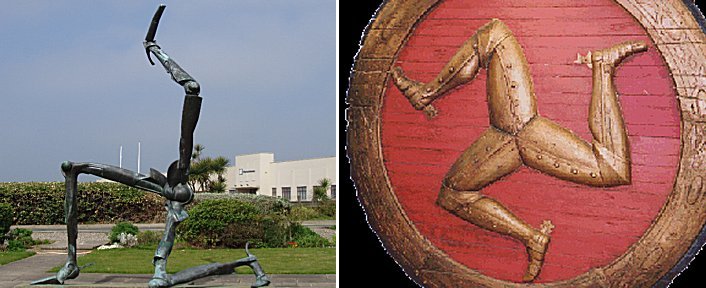Manannán Mac Lir – Irish God Of Sea, Healing, Weather And Master Of Shapeshifting
A. Sutherland - AncientPages.com - Manannán mac Lir (or Manann) - "son of the sea") - is a sea god in Irish mythology and the Welsh tradition; his other name is Manawydan.
Stephen Reid's illustration - Manannán's boat – The High Deeds of Finn and other bardic romances of ancient Ireland by T. W. Rolleston. http://www.gutenberg.org/files/14749/14749-h/14749-h.htm#IL16 - Public Domain
Generally, Manannán mac Lir is a popular figure in Irish mythology, and some Irish traditions even attempted to portray him as a historical figure.
Manannán mac Lir was also a god of the weather and healing. His father was Lir, an old and obscure god of the sea and ocean.
Manannán mac Lir had a beautiful wife, Fand (Fiand), who lived with his consent with a hero, Cuchulainn. Later, when she had to part with him, the god of the sea used to wear their mantle so that they would never meet again.
He raised the god Lugh (Luga) and was a foster father to other children.
Manannán mac Lir never lived on land but dwelled on a legendary island, Tír Tairngiri (' Country of Promise') or Mag Mell (' Plain of Joy').
Manannán mac Lir sculpture by John Sutton at Gortmore, Magilligan, County Londonderry. Credit: Kenneth Allen, Wikipedia, CC BY-SA 2.0
Even Emain Abhlach ('Island of Apple Tree') was associated with this sea god and the island of Avalon in later legends.
Curious Being With No Head Or Torso But Three Legs – Symbol Of The Isle Of Man
The name of this god derives from that of the Isle of Man (also known as Manx). In ancient beliefs, Mac Lir governed this place and protected it from invaders with his misty cloak.
As the legend says, he was the island's first ruler and "lived in a castle on the top of Mount Barrule.
Some stories claim his burial mound can be seen on the seashore beneath Peel Castle on the Isle of Man", and a vantage point looking out to sea was called Manannán's Chair, from which Manannán mac Lir was said to keep watch.
Manx fishermen claimed that, as they mended their nets, Manannán came to them, walking along the seashore followed by a curious being who seemed to have no head or torso but three legs—the symbol of the ever-moving sea and also the crest of the Isle of Man…" (P. Monagan)
On the Isle of Man, the history of the Triskelion ('three legs') dates back to pagan times and is originally a symbol of the sun, power, and life.
Extraordinary Magical Possessions
Manannán has many extraordinary magical powers. He owned a self-propelling boat named Scuabtuinne ("wave sweeper"), a sea-borne chariot drawn by the horse Enbarr ("water foam"), a mighty sword named Fragarach ("the answerer"), and a cloak of invisibility (féth fíada).
The god used a chariot drawn by horses to move across the sea waves, traveling faster than the wind could blow. His attribute was a pig, and he possessed magical pigs that could be eaten each day and appear alive the next day.
The Enbarr (Énbarr) was his horse mentioned in the Irish Mythological Cycle. The creature could traverse both land and sea. It was swifter than wind speed. Lugh Lamh-fada ( Irish: Lug Lámhfhada) had this horse at his disposal.
The Three-Legged Isle of Man Emblem, Manx Museum, Douglas.
He could change his form to become any creature he wanted, even a particular mortal if needed. He could grant his supernatural powers to others and create illusions of things to make them numerous or invisible.
Manannán mac Lir And Tuatha Dé Danann
Manannán mac Lir is believed to be older than the Tuatha de Danaan. This lineage is only given to him by a later tradition.
He remained affiliated with both the Tuatha Dé Danann and the Fomorians. However, he did not originally belong to Tuatha Dé Danann, one of the most central deities of ancient Ireland.
Tuatha Dé Danann accepted him. After the Milesians defeated them and they were forced to hide, he helped them.
They could retire to the Otherworld ('Sidhe' or the 'Hollow Hills') and remain invisible to people. The invisibility was brought by magical fog.
Manannán mac Lir gave Tuatha Dé Danann even more, namely, immortality and eternal youth. He also invited them to an extraordinary feast where magical pigs were served and endlessly renewed after being eaten.
Manannán Appeared In Literature And Scottish Folklore
In many Irish and Scottish tales, Manannán is sometimes a merchant mariner or a brave sailor with extraordinary celestial navigational skills, so he is never disoriented or lost at sea. Oral tradition has survived until today on the Isle of Man, and there are still many stories about the sea god Manannán mac Lir.
Written by – A. Sutherland - AncientPages.com Senior Staff Writer
Updated on December 10, 2023
Copyright © AncientPages.com All rights reserved. This material may not be published, broadcast, rewritten or redistributed in whole or part without the express written permission of AncientPages.com
Expand for referencesMoore A. W. The Folk Lore of the Isle of Man
Monagan P. The Encyclopedia of Celtic Mythology and Folklore
More From Ancient Pages
-
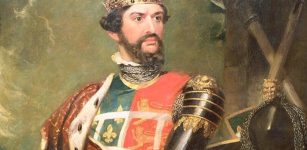 Illness And Death Of The Edward Of Woodstock ‘Black Prince’ Changed The Course Of English History
Archaeology | Dec 21, 2022
Illness And Death Of The Edward Of Woodstock ‘Black Prince’ Changed The Course Of English History
Archaeology | Dec 21, 2022 -
 Our 7-Day Week Can Be Traced To Babylonians Who Started Using It 4,000 Years Ago
Ancient History Facts | Nov 7, 2016
Our 7-Day Week Can Be Traced To Babylonians Who Started Using It 4,000 Years Ago
Ancient History Facts | Nov 7, 2016 -
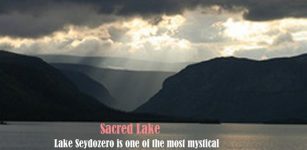 Hyperborea Or Atlantis Ruins – Underground Secrets Of The Sacred Lake On The Arctic Circle
Civilizations | Nov 17, 2014
Hyperborea Or Atlantis Ruins – Underground Secrets Of The Sacred Lake On The Arctic Circle
Civilizations | Nov 17, 2014 -
 Atomic Theory Was Invented 2,600 Years Ago By Acharya Kanad – A Genius Ahead Of His Time
Featured Stories | May 15, 2014
Atomic Theory Was Invented 2,600 Years Ago By Acharya Kanad – A Genius Ahead Of His Time
Featured Stories | May 15, 2014 -
 Massive Eruption Of Iceland’s Laki Volcano Triggered An Unusually Cold Winter In 1783-84
Archaeology | May 21, 2019
Massive Eruption Of Iceland’s Laki Volcano Triggered An Unusually Cold Winter In 1783-84
Archaeology | May 21, 2019 -
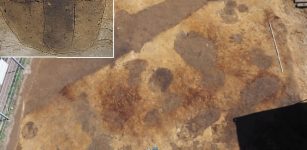 Roman Naval Base of Haltern in Germany Was Rebuilt Four Times 2,000 Years Ago
Archaeology | May 8, 2023
Roman Naval Base of Haltern in Germany Was Rebuilt Four Times 2,000 Years Ago
Archaeology | May 8, 2023 -
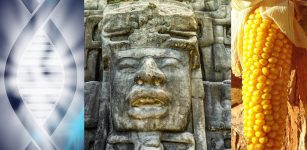 DNA Reveals Early Maya Trace Their Roots To Unknown Ancient Immigrants Carrying Maize From The South
Archaeology | Mar 22, 2022
DNA Reveals Early Maya Trace Their Roots To Unknown Ancient Immigrants Carrying Maize From The South
Archaeology | Mar 22, 2022 -
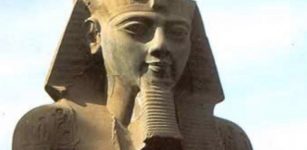 Colossus of Ramesess II At Karnak Temples Is Undergoing Restoration
Archaeology | Feb 24, 2017
Colossus of Ramesess II At Karnak Temples Is Undergoing Restoration
Archaeology | Feb 24, 2017 -
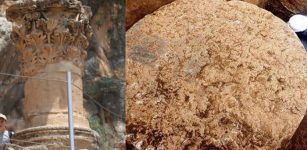 Massive Roman-Era Column Base Of Limestone Unearthed In The Foothills Of Mount Hermon, Golan Heights
Archaeology | Oct 29, 2022
Massive Roman-Era Column Base Of Limestone Unearthed In The Foothills Of Mount Hermon, Golan Heights
Archaeology | Oct 29, 2022 -
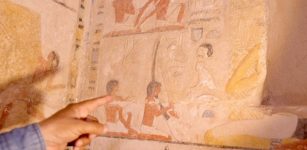 Largest And Most Complete Ancient Egyptian Workshops Found In Saqqara
Archaeology | May 28, 2023
Largest And Most Complete Ancient Egyptian Workshops Found In Saqqara
Archaeology | May 28, 2023 -
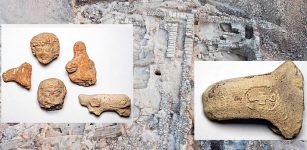 Kingdom Of Judah: Government Complex And 120 Seal Impressions Stamped On Jars – Unearthed
Archaeology | Jul 23, 2020
Kingdom Of Judah: Government Complex And 120 Seal Impressions Stamped On Jars – Unearthed
Archaeology | Jul 23, 2020 -
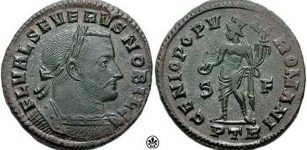 On This Day In History: Western Roman Emperor Severus II Died – On Sep 16, 307
News | Sep 16, 2016
On This Day In History: Western Roman Emperor Severus II Died – On Sep 16, 307
News | Sep 16, 2016 -
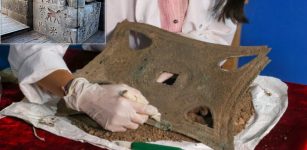 Ornamental Bronze Wall Plate Unearthed In Ayanis Castle Built By Urartian King Rusa II
Archaeology | Sep 13, 2022
Ornamental Bronze Wall Plate Unearthed In Ayanis Castle Built By Urartian King Rusa II
Archaeology | Sep 13, 2022 -
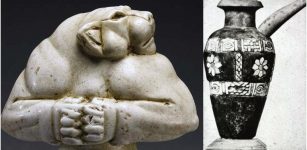 Mesopotamian City Jemdet Nasr Dated To 3100–2900 BC: Sophisticated Irrigation Techniques And Earliest Cylinder Seals
Featured Stories | Dec 18, 2016
Mesopotamian City Jemdet Nasr Dated To 3100–2900 BC: Sophisticated Irrigation Techniques And Earliest Cylinder Seals
Featured Stories | Dec 18, 2016 -
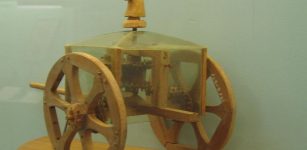 Remarkable South-Pointing Chariot – Ancient Cybernetic Machine Invented 1,700 Years Ago Is An Engineering Masterpiece
Ancient Technology | Jul 17, 2014
Remarkable South-Pointing Chariot – Ancient Cybernetic Machine Invented 1,700 Years Ago Is An Engineering Masterpiece
Ancient Technology | Jul 17, 2014 -
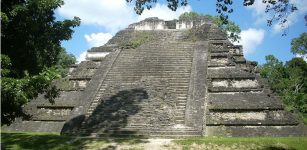 History Set In Stone – Maya Rulers Put Their Personal Stamp On Ancient Monuments
Archaeology | Sep 22, 2021
History Set In Stone – Maya Rulers Put Their Personal Stamp On Ancient Monuments
Archaeology | Sep 22, 2021 -
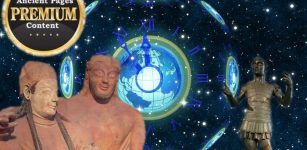 Did Etruscans Solve The Mystery Of Synchronicity And The Secret Language Of The Stars?
Civilizations | Jul 5, 2018
Did Etruscans Solve The Mystery Of Synchronicity And The Secret Language Of The Stars?
Civilizations | Jul 5, 2018 -
 Nicolas Bourbaki: The Greatest Mathematician Who Never Was
Featured Stories | Dec 24, 2019
Nicolas Bourbaki: The Greatest Mathematician Who Never Was
Featured Stories | Dec 24, 2019 -
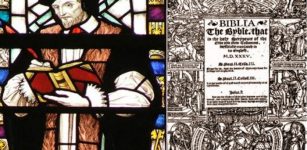 On This Day In History: Myles Coverdale Who Printed First English Bible Died – On Jan 20, 1569
News | Jan 20, 2017
On This Day In History: Myles Coverdale Who Printed First English Bible Died – On Jan 20, 1569
News | Jan 20, 2017 -
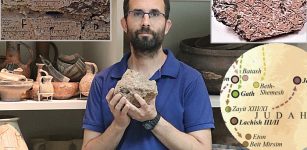 Geomagnetic Fields Reveal The Truth Behind Biblical Narratives
Archaeology | Oct 25, 2022
Geomagnetic Fields Reveal The Truth Behind Biblical Narratives
Archaeology | Oct 25, 2022



